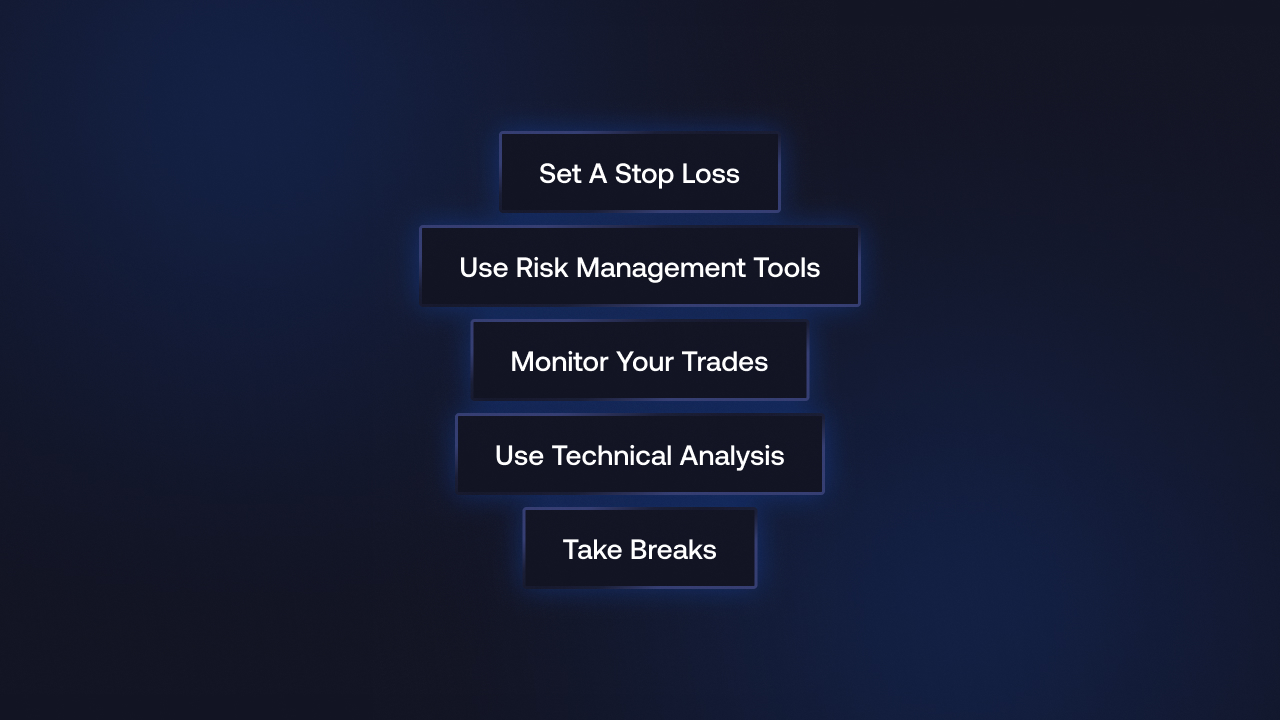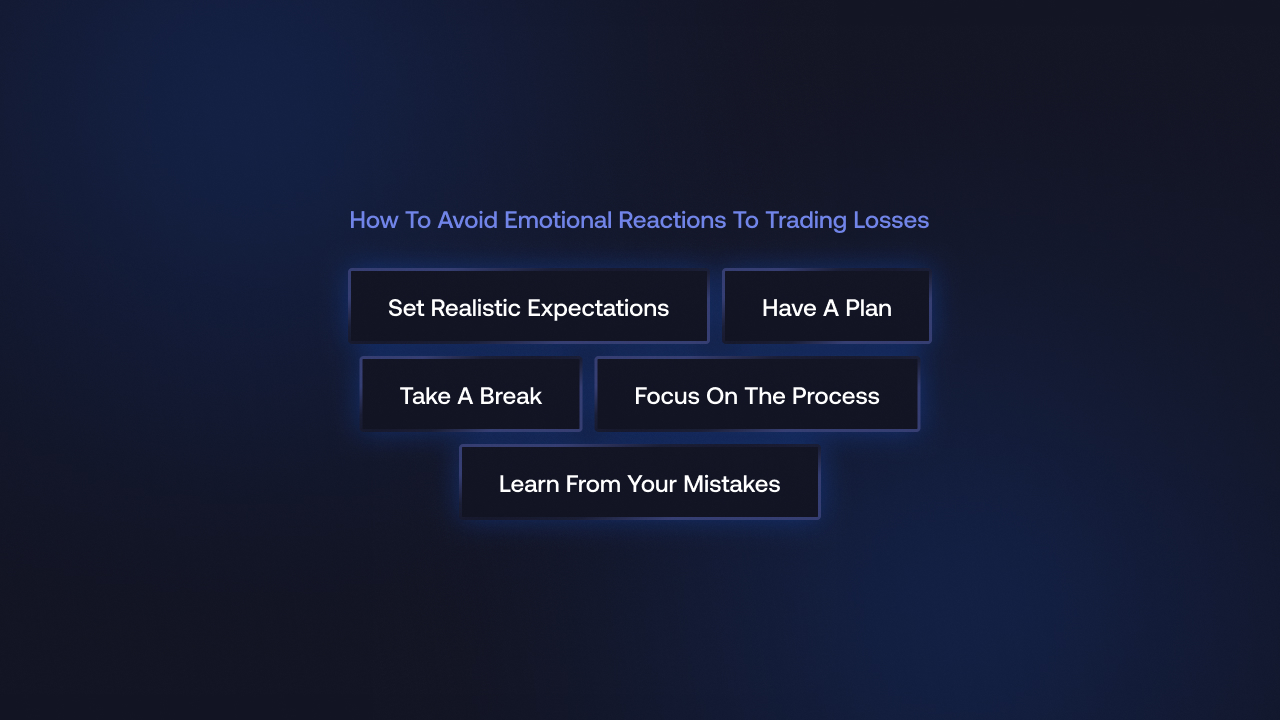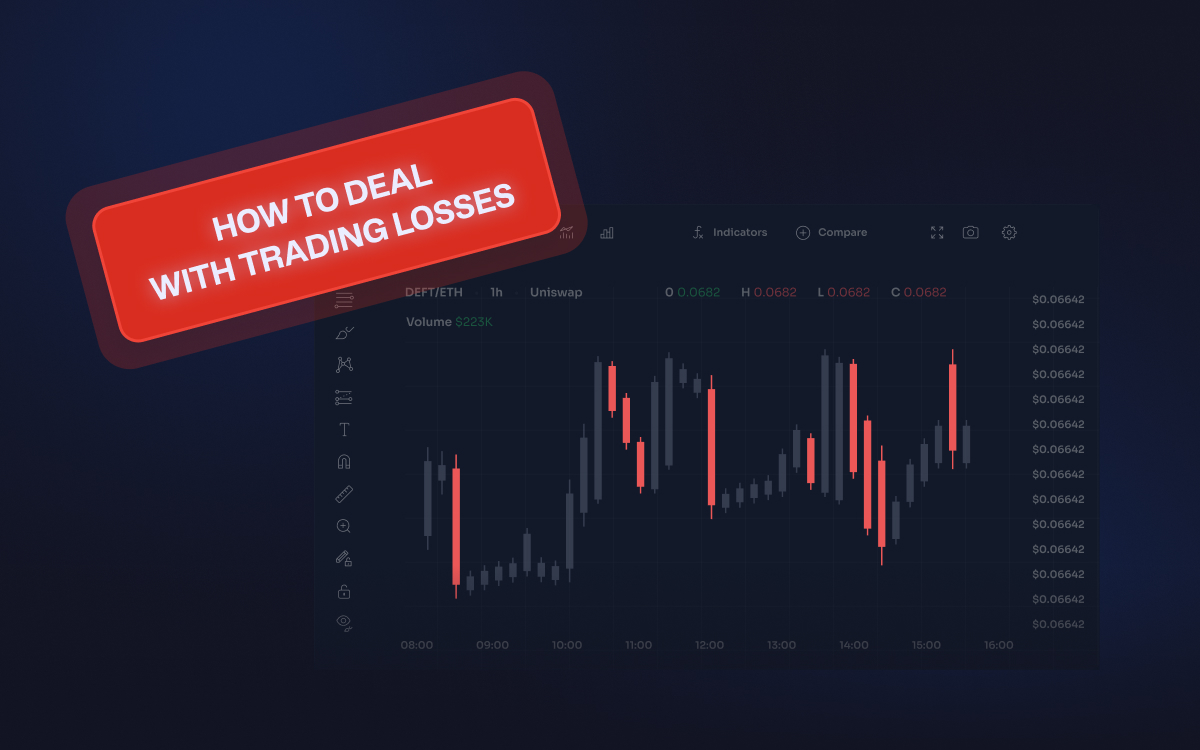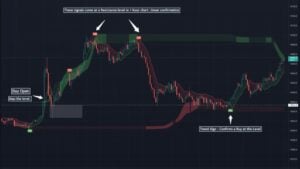Trading losses are an inevitable part of the game, so it is important to understand how to deal with them to be successful.
I know losses can be emotionally and financially draining, but it is not the end all be all as it may feel to newbie traders. In fact, your actions after taking a loss may as well define the success of your next few traders.
How to Deal with Trading Losses?
Here are some tips for dealing with trading losses:
Step 1: Accept the loss.
The first step in dealing with a trading loss is to accept it. It is important to recognize that losses are part of the trading process and that they are unavoidable. Accepting the loss will help you move on and focus on the next trade.
Step 2: Analyze the loss.
Once you have accepted the loss, it is important to analyze it. Take the time to review the trade and identify what went wrong. This will help you to learn from your mistakes and avoid making the same mistakes in the future.
Step 3: Move to the next trade.
Once you have accepted and analyzed the loss, it is important to move on. Don’t dwell on the loss or let it affect your trading decisions. Focus on the next trade and make sure you are prepared for it.
Step 4: Set a loss limit.
It is important to set a loss limit for each trade. This will help you limit your losses and ensure you don’t take too much risk.
Step 5: Take a break.
If you feel overwhelmed by trading losses, it is important to take a break. Take some time away from trading to clear your head and refocus.
By following these tips, you can learn to deal with trading losses and become a successful trader.
How to Develop a Trading Loss Prevention Strategy?

Trading loss prevention is an important part of any trading strategy. It is essential to have a plan in place to protect your investments and minimize losses.
1. Set a Stop Loss:
A stop loss is a predetermined price at which you will exit a trade if it moves against you. This helps to limit your losses and protect your capital.
2. Use Risk Management Tools:
Risk management tools like position sizing and diversification can help you manage risk and limit losses.
Position sizing is the practice of adjusting the size of your trades based on the amount of risk you are willing to take. Diversification spreads your investments across different asset classes and markets to reduce risk.
3. Monitor Your Trades:
It is important to monitor your trades and be aware of any changes in the market. This will help you identify potential losses and take action to prevent them.
4. Use Technical Analysis:
Analyze price charts to identify trends and patterns. This can help you identify potential losses and take action to prevent them.
5. Take Breaks:
Taking breaks from trading can help you stay focused and make better decisions. It can also help you avoid emotional trading decisions leading to losses.
By following these tips, you can develop a trading loss prevention strategy that will help you protect your investments and minimize losses.
How to Use Risk Management Strategies to Reduce Trading Losses
By implementing simple strategies, traders can significantly reduce risk and protect their capital.
The first step in risk management is to set a stop-loss order. A stop-loss order is an order to sell a security when it reaches a certain price. This helps to limit losses if the price of the security drops.
Don’t forget to set a realistic stop-loss order that is not too close to the current price, as this could result in a premature exit from a trade.
The second step is to use position sizing. Position sizing is the process of determining how much of a security to buy or sell.
Use position sizing to ensure that the risk taken on each trade is within the trader’s risk tolerance. This can be done by calculating the risk per trade and adjusting the position size accordingly.
The third step is to use diversification. Diversification is the process of spreading risk across different asset classes and markets. By diversifying, traders can reduce their risk and protect their capital.
How to Analyze and Learn from Trading Losses
Here are some tips for analyzing and learning from trading losses:
1. Analyze the Loss: Take the time to analyze the loss and identify its reasons. Was it due to a lack of research, a bad entry or exit point, or a lack of risk management? Understanding the cause of the loss can help you avoid making the same mistake.
2. Review Your Trading Plan: Review your trading plan and make sure it is still relevant and up-to-date. Are there any changes that need to be made? Are there any new strategies that could be implemented?
3. Take a Break: After a loss, it is important to take a break from trading and clear your head. This will help you to stay focused and make better decisions in the future.
4. Reflect on Your Mistakes: Reflect on your mistakes and consider how you could have avoided them. This will help you to become a better trader and make more informed decisions in the future.
5. Seek Professional Help: If you are struggling to analyze and learn from your losses, it may be beneficial to seek professional help. A professional trader or mentor can provide valuable insight and advice to help you become a better trader.
By following these tips, you can analyze and learn from your trading losses and become more successful.
How to Avoid Emotional Reactions to Trading Losses

Here are some tips to help you avoid emotional reactions to trading losses:
1. Set realistic expectations: Before you begin trading, it is important to set realistic expectations about potential losses. Understand that losses are a normal part of trading and should be expected.
2. Have a plan: Develop a trading plan that outlines your risk management strategies and how you will handle losses. This will help you stay focused and disciplined when trading.
3. Take a break: If you feel overwhelmed or emotional, take a break from trading. Step away from the markets and take some time to clear your head.
4. Focus on the process: Instead of focusing on the outcome of each trade, focus on the process. Focus on the decisions you made and the strategies you employed.
5. Learn from your mistakes: Take the time to analyze and learn from your losses. Ask yourself what you could have done differently and how you can improve your trading in the future.
By following these tips, you can help avoid emotional reactions to trading losses and become a more successful trader.
How to Use Stop Losses to Limit Trading Losses
Stop losses are important for traders to limit losses in an unexpected market move. A stop loss is an order from a broker to sell a security when it reaches a certain price. This price is known as the stop loss price.
When a trader places a stop loss order, they limit how much they are willing to lose on a trade. If the security reaches the stop loss price, the order will be triggered, and the security will be sold at the stop loss price. This helps to limit the trader’s losses in the event of an unexpected market move.
Stop losses can be used in a variety of ways. For example, a trader may place a stop-loss order at a certain percentage below the current market price. This will help to limit losses if the security moves in an unexpected direction.
Alternatively, a trader may place a stop-loss order at a certain price level. This will help to limit losses if the security moves below that price level.
Do note that stop losses are not guaranteed. If the security moves quickly, the order may not be triggered in time, and the trader may suffer a larger loss than expected. Therefore, stopping losses in conjunction with other risk management strategies is important.
How to Develop a Trading Loss Recovery Plan
A trading loss recovery plan is an important tool for any trader. The plan outlines a trader’s steps to recover from a trading loss. Developing a trading loss recovery plan can help traders stay disciplined and focused on their trading goals. Here are some tips for developing a trading loss recovery plan.
1. Identify the cause of the loss: The first step in developing a trading loss recovery plan is to identify the cause of the loss. Was it due to a lack of research, poor risk management, or a bad trade? Understanding the cause of the loss can help traders avoid making the same mistake.
2. Set realistic goals: Once the cause of the loss has been identified, traders should set realistic goals for recovering their losses. These goals should be achievable based on the trader’s risk tolerance and style.
3. Develop a plan: Once the goals have been set, traders should develop a plan for achieving them. This plan should include a timeline, risk management strategies, and a strategy for managing emotions.
4. Monitor progress: Once the plan has been developed, traders should monitor and adjust it as needed. This will help ensure the trader is on track to reach their goals.
5. Review and adjust: Finally, traders should review their plans periodically and adjust them as needed. This will help ensure that the plan is relevant and that the trader is still on track to reach their goals.
By following these steps, traders can develop a trading loss recovery plan that will help them stay disciplined and focused on their trading goals.
Frequently Asked Questions
How can I minimize trading losses?
First, it is important to have a well-defined trading plan and strategy. This should include risk management techniques such as setting stop-loss orders and taking profits at predetermined levels. Additionally, stay disciplined and stick to your plan.
What should I do if I am feeling overwhelmed by trading losses?
If you feel overwhelmed by trading losses, taking a step back and reassessing the situation is important. Take some time away from trading and focus on other aspects of your life. Additionally, it is important to remember that trading losses are a part of the process and should not be taken too personally.
How can I stay disciplined when trading?
Staying disciplined when trading is essential for success. It is important to have a well-defined trading plan and strategy. Additionally, setting realistic goals and sticking to them is important. Finally, taking profits at predetermined levels and using stop-loss orders to limit losses is important.






